Introducing Google Dynamic Search Ads
New to PPC, or still picking up the more advanced areas of the channel? Read on below for our primer on Dynamic Search Ads.
Sign up to our free Google Ads email course.
7 days, 7 lessons. Everything from how to structure your Google Smart Shopping campaigns to ad testing, and YouTube ads excellence. Sign up and level up your Google Ads eCommerce game.
What are Dynamic Search Ads?
Dynamic Search Ads are the easiest way to target searches on Google. It’s an ideal solution for brands with large websites, and is relevant to advertisers across all verticals. Unlike regular search campaigns, that target users with keywords, Dynamic Search Ads generates ads based on your website content.
How does it work?
Dynamic Search Ads works by matching a user’s search query, against the content on your website. It does this by crawling your website for relevant, often long-tail search terms, that you may not be actively targeting with keywords.
Dynamic Search Ads then automatically generate ad headlines, based off each search query, and automatically directs the user to the relevant page on your website. In the example below, the search query ‘long sleeve polo shirts’ is matched against the advertisers landing page, which is scanned by Google for relevancy. It then incorporates the Page Title into the ad served against the search query:
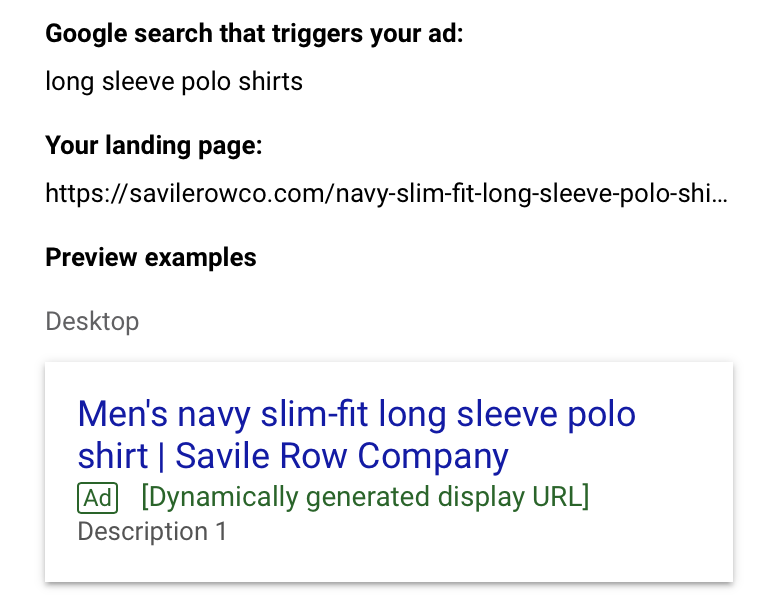
How to use it?
With Dynamic Search Ads, there are essentially three main targeting options, ranging from granular to broad.
Target by URL
The most specific targeting option is to target specific pages, if you want to expand your reach across very specific areas of your business.
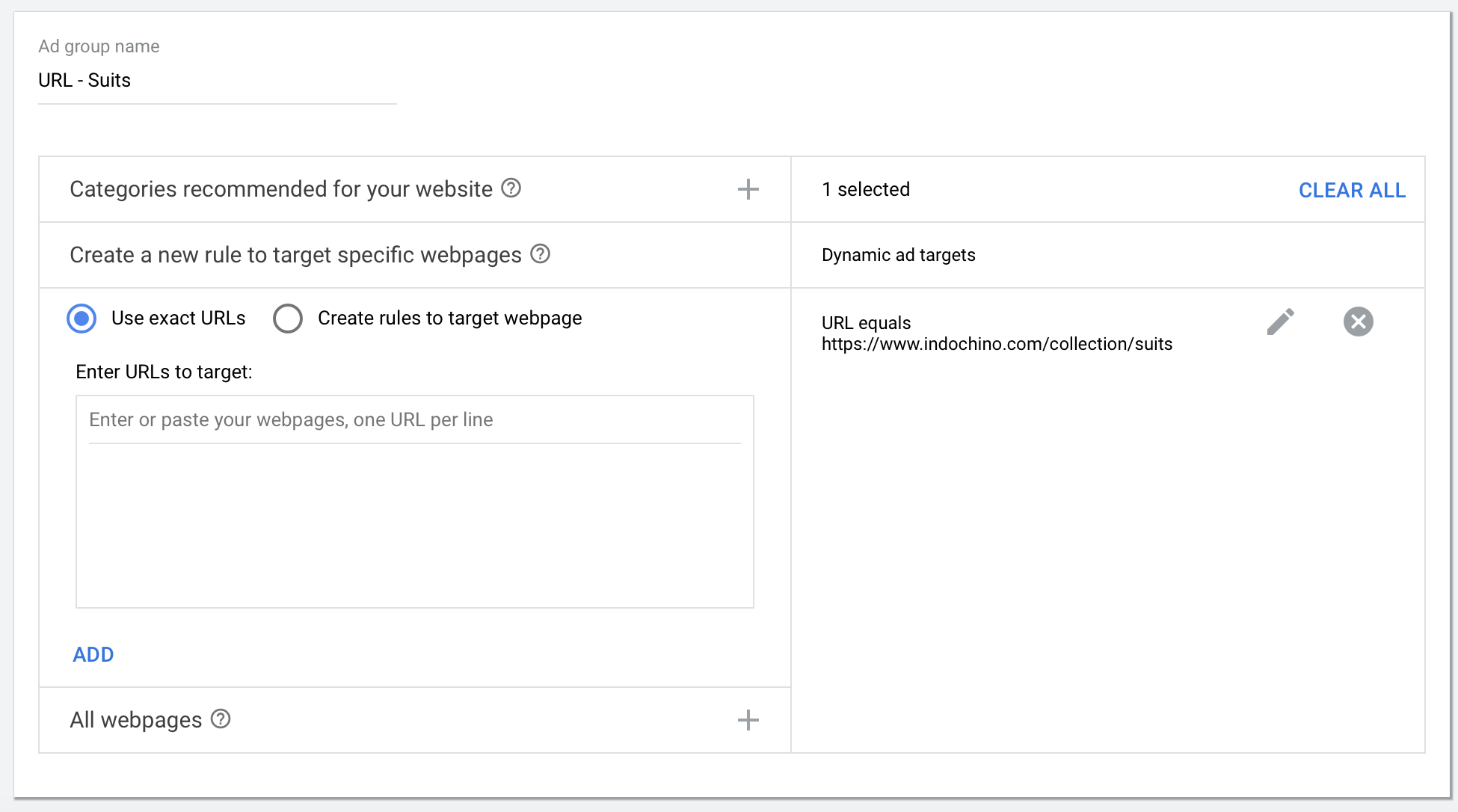
Target by Category
Categorises content into specific groups, based off things like page titles and your sitemap. For example, a menswear retailer might categorise it’s website into polo shirts, t-shirts, formal shirts, and linen shirts.
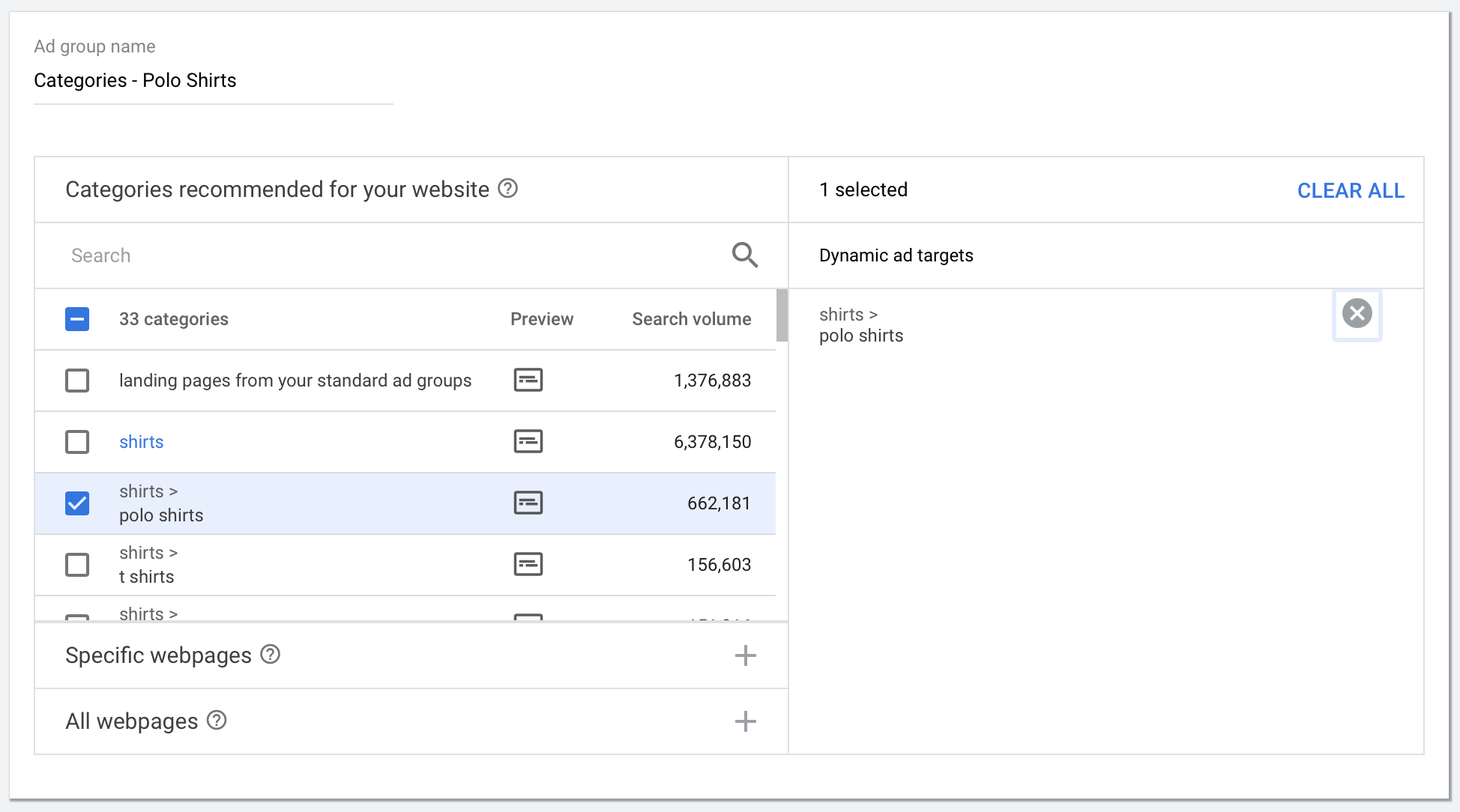
Target All Web Pages
The broadest targeting criteria will serve ads across all of your website content, which may include your blog, ‘about us’ page, and other forms of informational content.
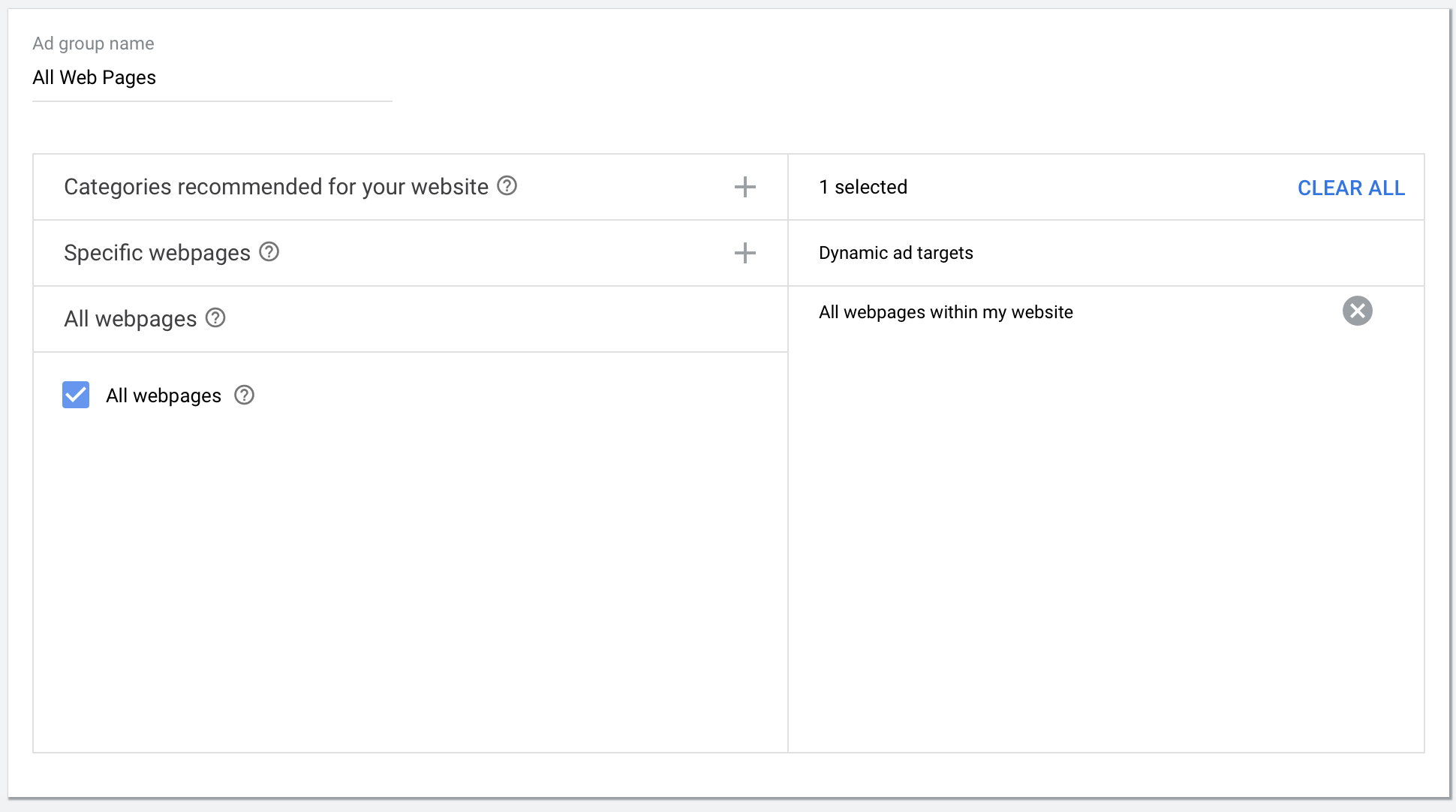
What kind of uplift can I expect?
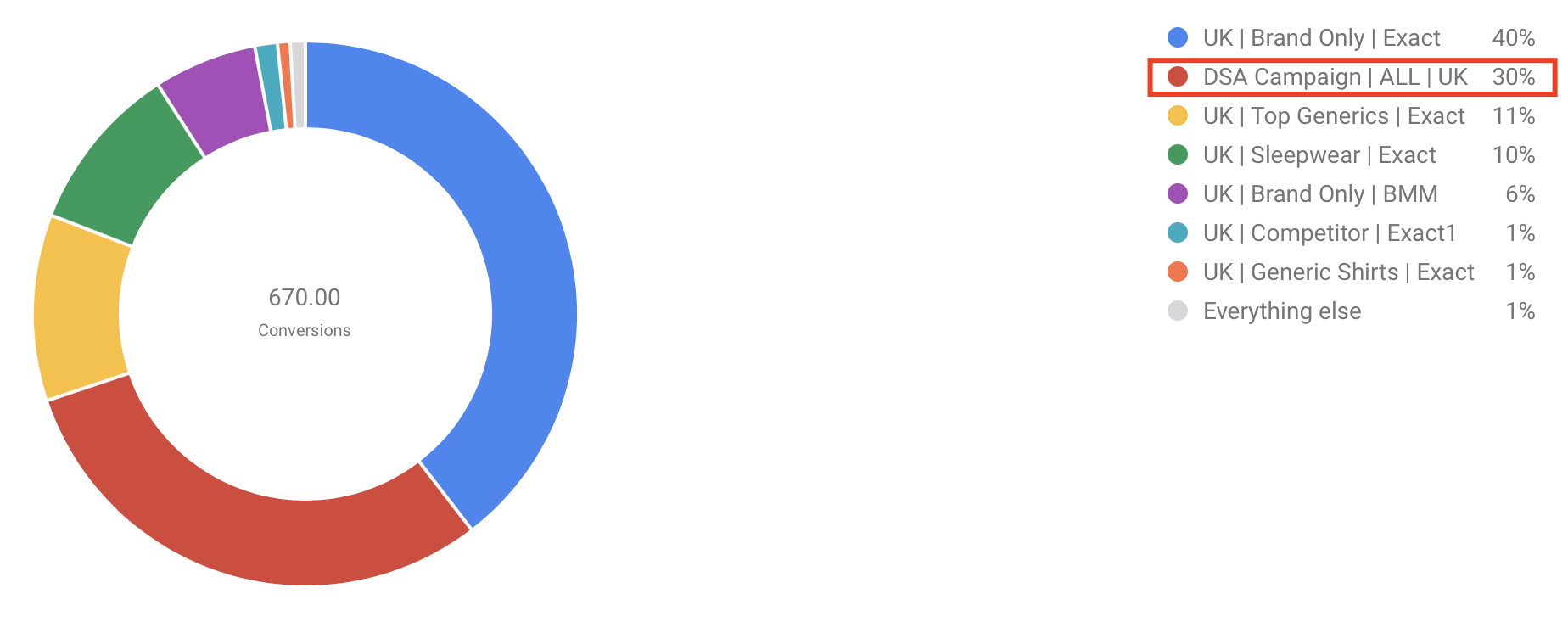
Taking it to the Next Level
Rule 1: Split out targeting by ad group
As mentioned above, there are five targeting options for DSA, ranging from super-specific to broad. Unlike keyword-targeted ad groups, where you can bid differently on keywords within a single ad group, with DSA, a single bid applies to each ad group. Therefore, splitting our your targeting by ad group is more likely to deliver optimal results, given that you can control how much you choose to bid across each category.
For example, let’s look at a couple of examples of this in practice. The below ad group contains multiple categories, and as bids are set at the ad group-level with Dynamic Search Ads, the same bid will apply across each, regardless of performance or category margin:
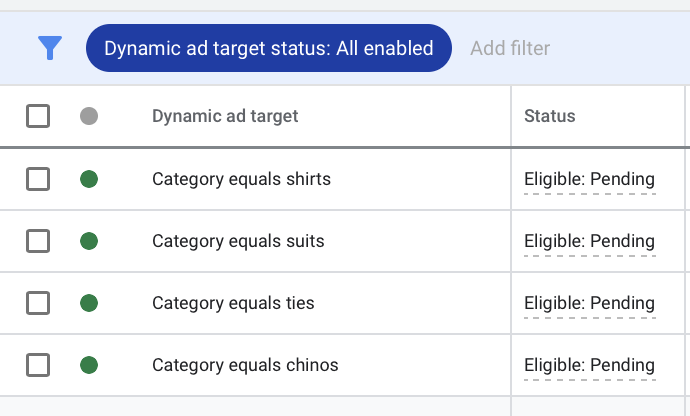

Another benefit of this approach is that you have a better view of which search queries are triggering your ads, and this makes the process of adding negatives much easier than having search terms relating to multiple categories within the same ad group.
Rule 2: Add exact match negatives
Dynamic Search Ads is a great way to find incremental traffic, and this is a tactic that firmly sits in the ‘low effort-high impact’ category. That being said, as the targeting is based on website content, there is a potential risk that your DSA campaign could potentially cannibalise traffic from your regular, keyword-targeted campaigns.
To avoid this being an issue, you can easily add exact match negatives to the campaign, or even better, add them to the shared library in order to add them to multiple campaigns. Here’s an example of exact match keywords being added as negatives within the shared library, and then added to multiple DSA campaigns:
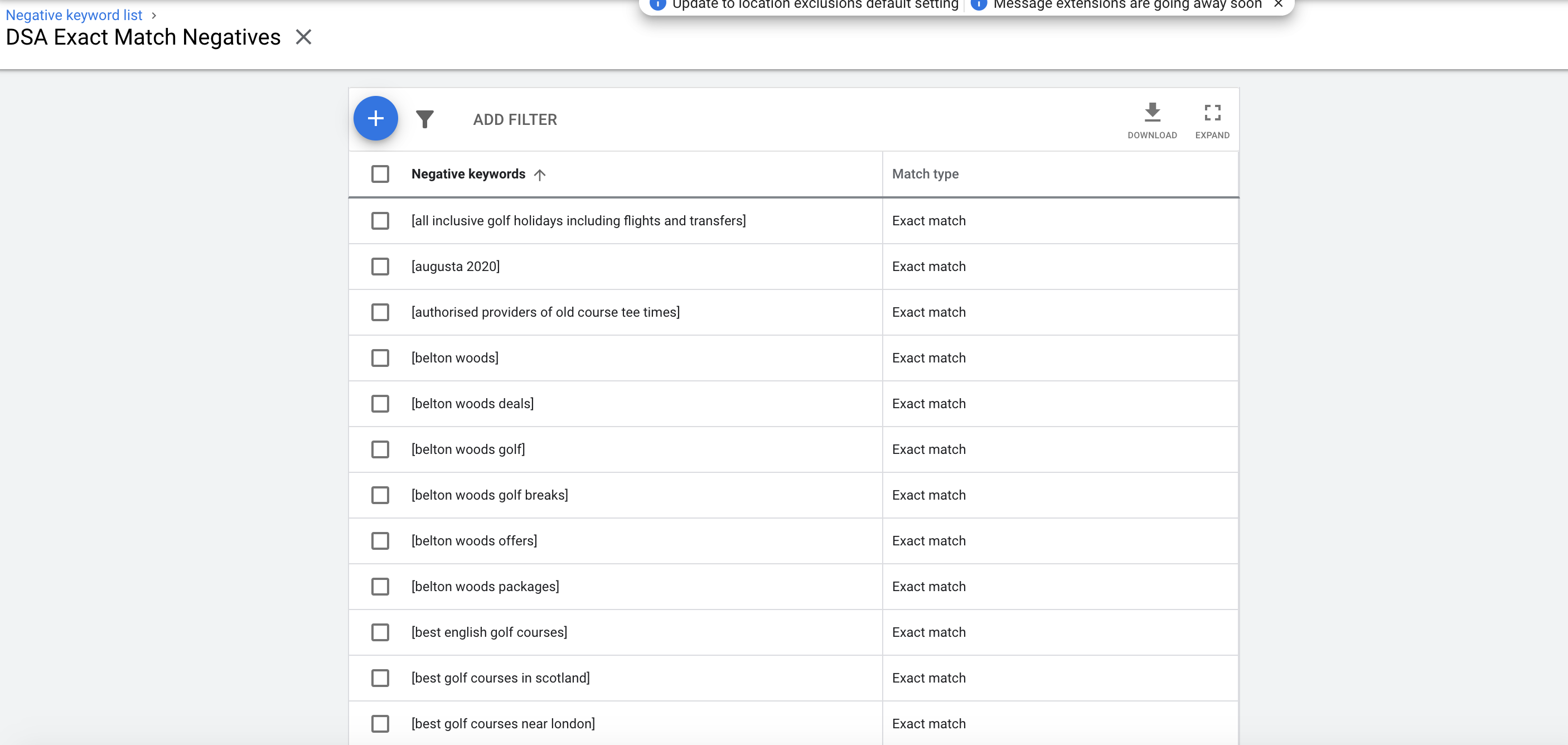
The key benefit here is that it funnels exact match traffic to your keyword-targeted campaigns, where CTR is likely to be higher, as you have purpose-built ads in place to cater for those searches.
Rule 3: Combine with Target CPA for best results

Rule 4: Always be harvesting
As mention in Rule 3, Dynamic Search Ads are a great way of finding incremental traffic opportunities. However, to make the most of this, you need to constantly be adding profitable search queries as keywords in your regular, keyword-targeted campaigns. In doing so, you improve relevancy across those search queries, as you’re effectively serving a bespoke ad to that audience, as opposed to a catch-all Dynamic ad.
As a rule of thumb, I’d suggest adding in anything that has converted multiple times as a keyword, or anything which has accrued over 30 impressions within the last 30 days.
Be sure to also add high impression, low click search queries as negatives, as this will ultimately improve your CTR within your Dynamic Search Ads campaign.
Rule 5: Always be testing


